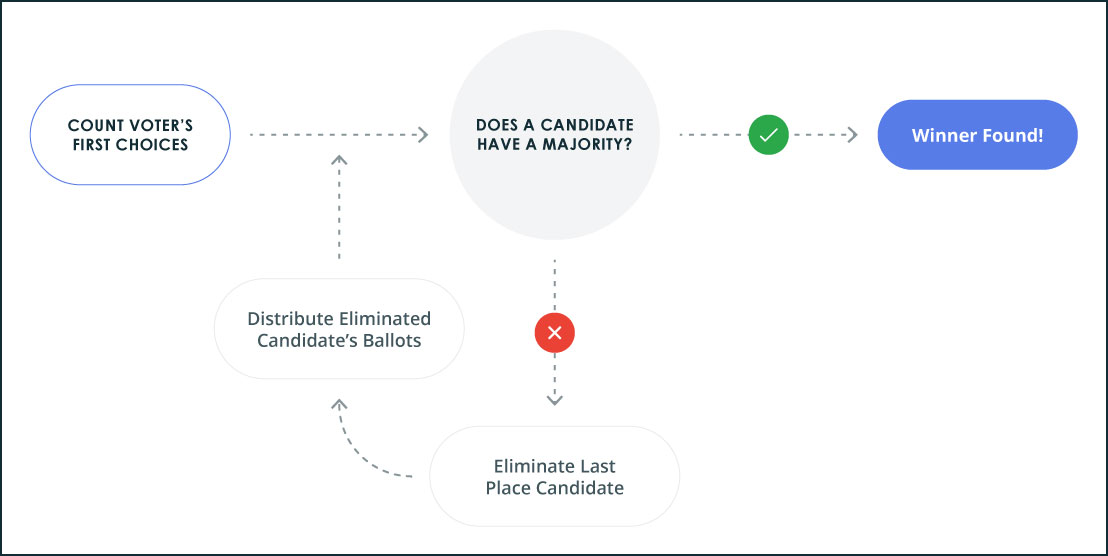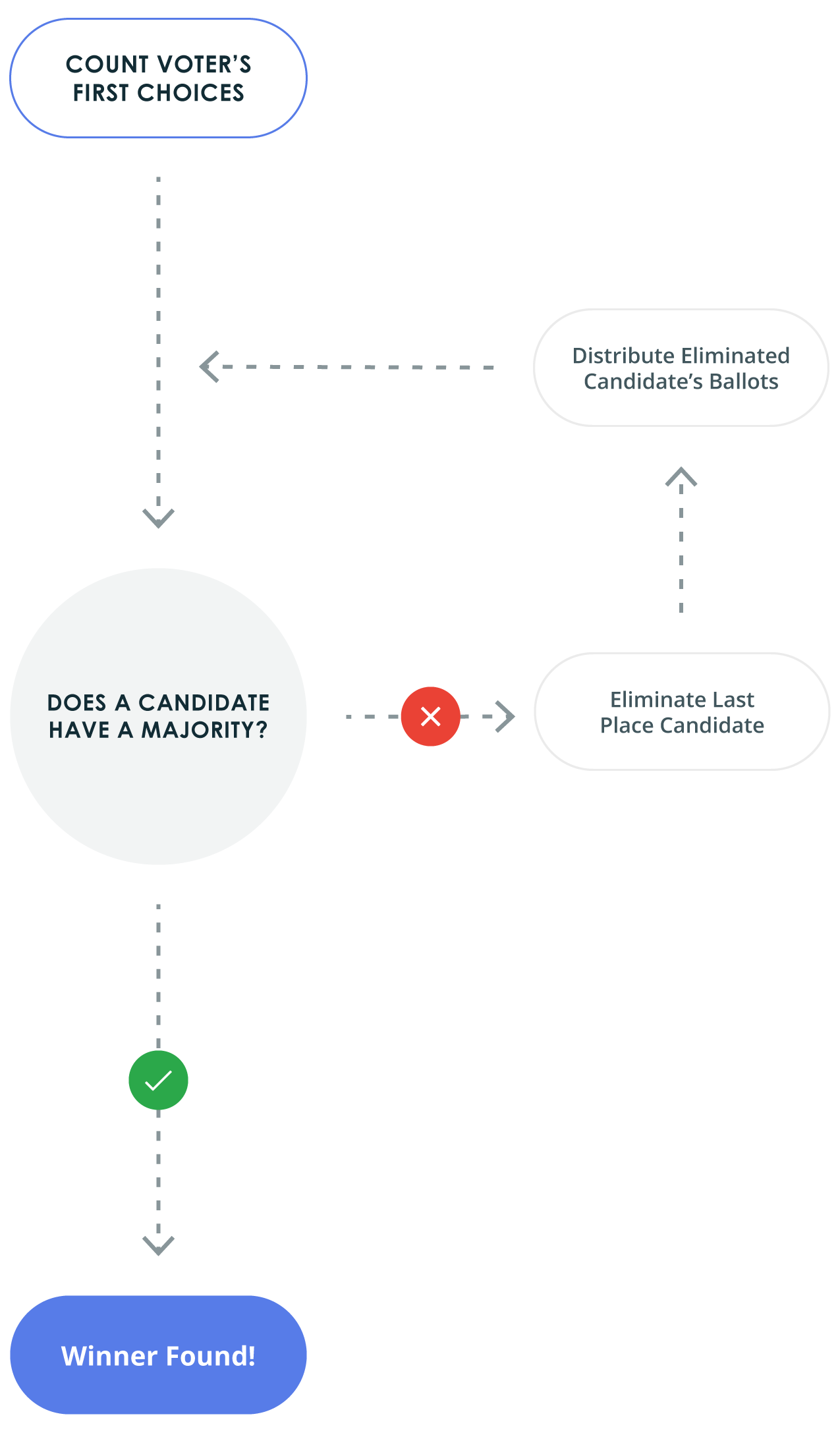How Preferential Voting Works
June 6, 2019

It is also known as instant-runoff voting
Instant-runoff voting (IRV) is a type of ranked preferential voting method used in single-seat elections with more than two candidates. Instead of indicating support for a single candidate, voters in IRV elections or ballots can rank the candidates in order of preference.
For example, this video simply explains how this type of voting work on Australian elections.
Our platform allows a single candidate to be elected with any number of nominated candidates. The vote can be monitored in real-time with an online management dashboard which breaks down each round of preference until a winner is found.
Preferential Voting Process


The voters rank the candidates in order of preference, with “1” being the highest (most preferred) ranking. For example, if there are 3 candidates, the voter chooses 1 beside their first choice, 2 beside their second choice and 3 beside their third choice.
To be considered a valid ballot, the submitted ballot must satisfy the following conditions:
- At least one candidate must be ranked for each position. In case abstention is allowed and the voter has abstained from voting for a position, the ballot may still count as valid for any other positions in the election.
- No two candidates can have the same ranking, or the ballot is invalid (for that particular position only).
Any candidate can be given any ranking, as it is the relative ranking that is counted.
How Preferential Voting Results are Calculated
Preferential voting decision diagram.
- Count the voters first choice,
- Does that candidate have a majority? If yes, then the winner has been found.
If not, then eliminate the last-place candidate and distribute eliminated candidate’s ballots. Repeat to step 2.
The first preference on each ballot counts as a vote for that particular candidate, and the votes are tallied. If no candidate receives a majority (greater than 50% of the total valid ballots), the candidate with the fewest number of votes is eliminated and the ballots for that candidate are redistributed to each ballot’s second preference.
The process continues until a majority is reached by one of the candidates.
Learn more about instant run-off voting.
Where can preferential voting be used?
In most cases, preferential voting can be used in any candidate voting scenario, but in some cases, the first past the post or cumulative voting is utilised. In some organisations (such as sporting clubs, schools, tertiary education institutions, universities and government), it is governed by a constitution that has chosen a particular method of voting for their ballots and elections. If the IVR method of voting doesn’t quite apply to the election, we can help them by customising the voting method to suit their specific organisation.
Read our FAQ to know more and see how we can help.




